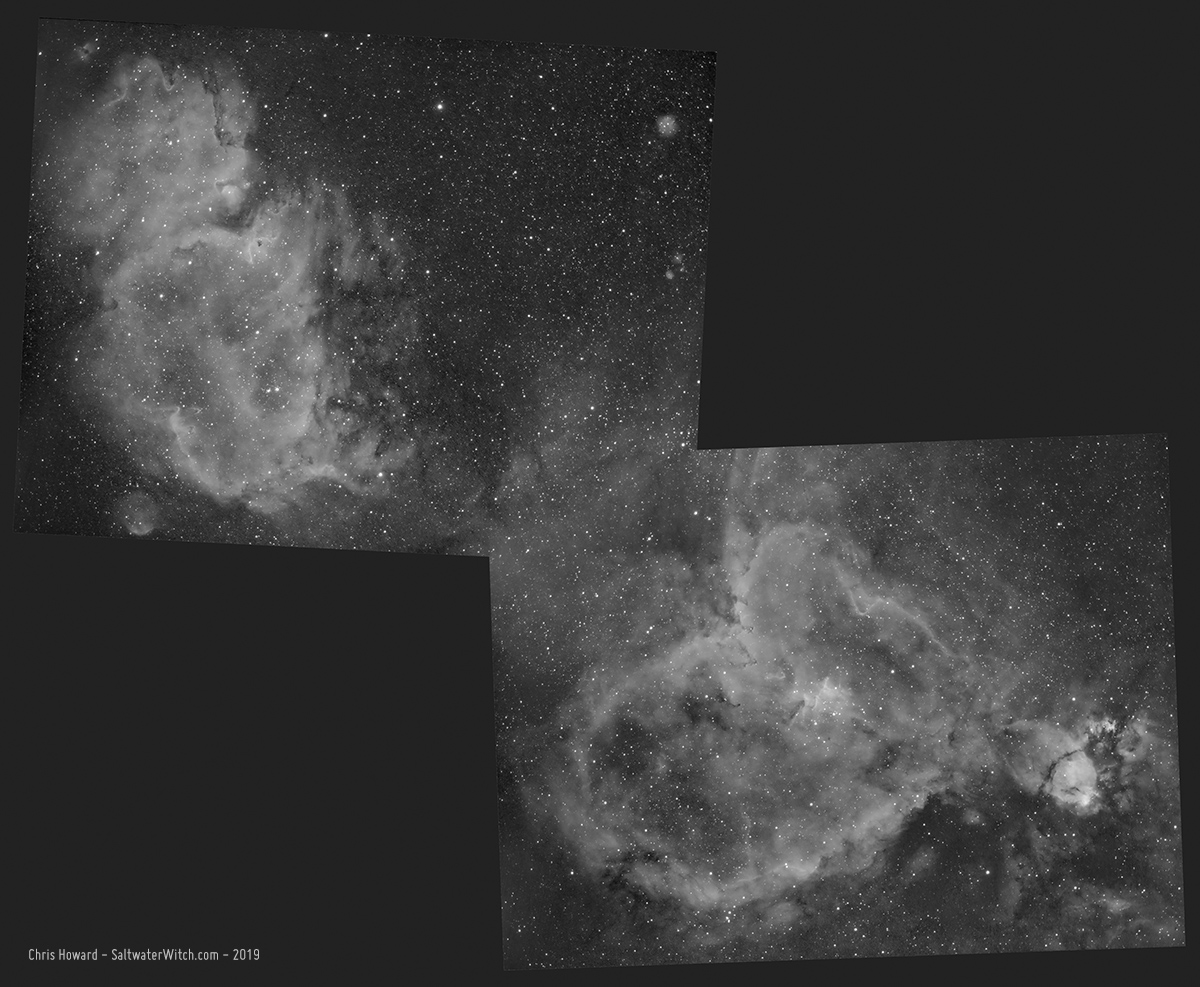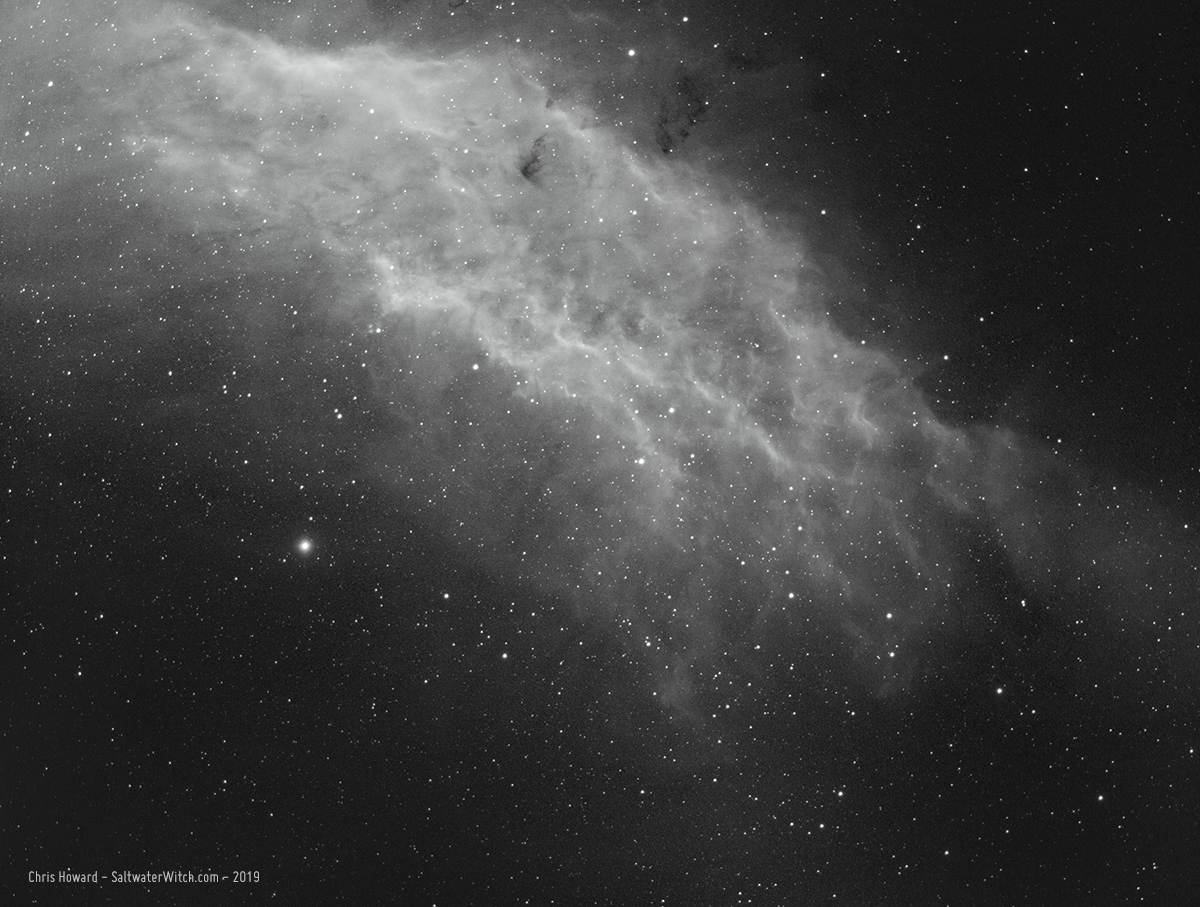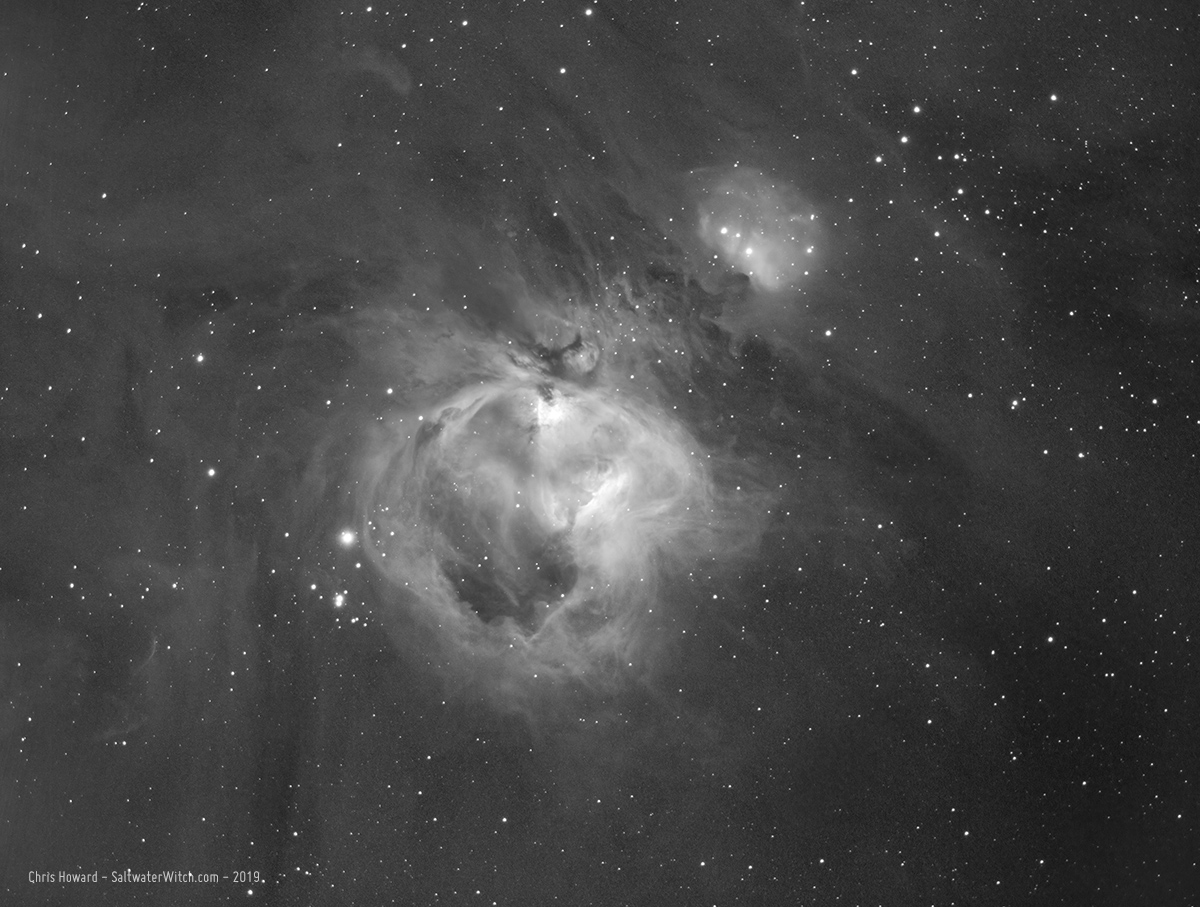Wide-field Narrowband Setup
Setting up and testing my wide-field astro gear: the William Optics SpaceCat 51 primary scope, 200mm guide scope, and everything else is ZWO--autofocuser (EAF), ASI120MM-S mono guide camera, ASI1600MM-Pro monochrome primary camera, and EFW with my Astronomik 6nm narrowband filters and the new Antlia 3 nanometer hydrogen-alpha filter. I switched to a guide scope from off-axis guiding with this setup because focusing with the different thicknesses of the filter material pushed my guide focus a bit too far. I was using this 50mm/200mm FL William Optics guide scope with the 800mm Newt because I had the same situation, narrowband filters mixed with near infrared filters with different brands and glass thickness.

Posted September 8, 2021
High-gain Test - Gathering Narrowband Data
Autumn is officially here, and this is the season of the Pleiades, Orion, the nebulae in the constellations of Perseus, Monoceros, Auriga, Taurus, and Gemini. Now, M42 isn't in view until 2am, so that had to be the last in the sequence. And, yes, you can tell I was just dorking around with filters with our galactic neighbor, Andromeda M31, in near IR and hydrogen-alpha. I know M31 is a decent Ha target, and you can see some wonderful images in Ha-RGB out there in the world, but I had never tried shooting 2-minute subs of M31 with a 685nm long pass filter.
I ran the ZWO ASI1600MM-Pro mono CMOS camera at a gain of 200 and offset of 65 in the following shots. And no calibration frames for any of these. Higher gain reduces dynamic range, but you're also reducing read noise and gaining (ha ha) resolution and the ability to shoot shorter exposures--and more of them, and if you take enough subs, this should balance things out. There are miles of discussion on gain and offset in astro-imaging, but I was recently reading Jon Rista's comments in an astrobin forum thread and that got me to test out higher gain/offset.
M31 in Near-IR + Ha

I moved over to Cassiopeia and shot 40 x 4-minute subs each of IC 1805 (Heart Nebula) and IC 1848 (Soul Nebula) in Hydrogen-alpha. Here's the stitched together pair:

Still waiting for Orion to get above 30°, I spent some time on NGC 1499 "California Nebula"

And Orion is back in the sky! Sure, you have to get up at 3 in the freakin' morning to see it with your own eyes. Or you can program your astro imaging system to stay up all night and take pictures without you. Here's M42, Orion Nebula, along with M43, De Mairan's Nebula--that's the spherical-looking cloud formation with the big bite taken out of it. And above that, shining brightly, Sh2-279 Running Man Nebula--although the famous running man shape isn't clear in hydrogen alpha. I'm not sure how well it comes out with oxygen III and sulfur II, but I'll come back another night to capture the OIII and SII frames. Notes: 31 x 240 second exposures in Ha + 20x 10 second subs just for the Trapezium (the super bright core of the Orion Nebula--so bright I have to take separate short exposure shots and merge it back in processing). William Optics GT81 APO refractor, ZWO ASI1600MM-Pro mono camera, Astronomik 6nm Ha filter.

Posted September 26, 2019
North America Nebula (NGC 7000) and the Pelican Nebula (IC 5070, IC 5067)
I spent most of last night's imaging run, about 5.5 hours, on this two-panel mosaic of NGC 7000, the North America Nebula and IC 5070, IC 5067 the Pelican Nebula. NGC7000 and this whole area is one of those deep sky objects with which you can do amazing things in narrowband or broadband color, and turns out beautifully in RGB, bi-color Ha and OIII, even Hydrogen-alpha by itself. For this shot I went with the Hubble Palette in SHO, mapping SII-Ha-OIII to RGB, Sulfur = Red, Hydrogen = Green, Oxygen = Blue. This is why you see aqua and gold standing out in many of the Hubble images. It also affects star color, and you end up with some shade of purple.

Here's an update with the two-panel mosaic of the North America Nebula (NGC 7000) and Pelican Nebula (IC 5070, IC 5068). I fixed the stars and toned down the whole image

